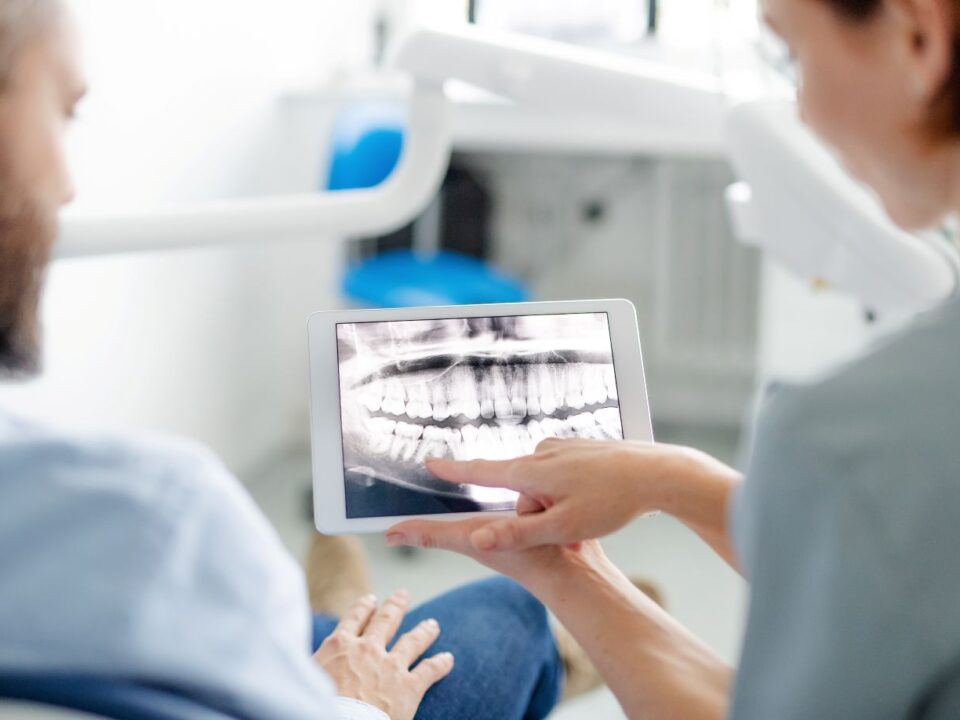Understanding the truth about whitening safety and results
A bright, confident smile is one of the first things people notice. It can boost your self-esteem, enhance your appearance, and even make you feel more comfortable in social and professional settings. So it’s no surprise that teeth whitening is one of the most popular cosmetic dental treatments today.
But one question remains at the top of patients’ minds: Is teeth whitening safe? The short answer is yes – when done correctly and under professional supervision. However, not all whitening methods are created equal, and there are important factors to consider before you decide which route to take. In this post, we’ll walk you through what causes tooth discoloration, how teeth whitening treatment works, and how to whiten safely for lasting results.
What Causes Tooth Discoloration?
Understanding what leads to stains is the first step toward effective whitening. There are two main types of tooth discoloration:
- Extrinsic (Surface) Stains: These are stains that develop on the outer enamel layer of your teeth. They’re usually caused by lifestyle and dietary habits such as coffee, tea, and red wine drinking, tobacco usage, consumption of dark-colored foods, and poor oral hygiene.
- Intrinsic (Internal) Stains: These stains occur beneath the surface of the enamel, within the dentin (the inner layer of the tooth). Common causes include aging, certain medications, excessive fluoride intake, and trauma.
While extrinsic stains often respond well to whitening, intrinsic stains may require professional treatment or cosmetic solutions like veneers or bonding.
How Does Teeth Whitening Work?
Most whitening treatments rely on peroxide-based agents – either hydrogen peroxide or carbamide peroxide. These chemicals break down stain molecules into smaller, less pigmented components, effectively “bleaching” the tooth.
The concentration of the active ingredient determines the strength and speed of whitening:
- Over-the-counter products like strips or gels typically contain 3–10% hydrogen peroxide.
- Professional take-home kits from your dentist may have 10–20% carbamide peroxide.
- In-office treatments can use up to 35–40% hydrogen peroxide, often combined with special lights or lasers to enhance results.
Because professional whitening uses higher concentrations, it produces faster, more noticeable results, usually in just one session.
Is Teeth Whitening Safe?
When done correctly, teeth whitening is considered safe and effective. The American Dental Association (ADA) approves certain whitening products and methods as safe for use. However, misuse or overuse of whitening agents can lead to side effects. Let’s break down what’s safe, and what to watch out for.
- Professional Supervision: Whitening under a dentist’s supervision ensures the right product and concentration for your needs. Your dentist can also protect your gums and address any sensitivity concerns.
- Custom-Fitted Trays: If you choose a take-home whitening kit from your dentist, custom trays ensure the gel distributes evenly and stays on your teeth – not your gums.
- Moderation: Whitening too frequently can erode enamel over time. Stick to recommended schedules and give your teeth time to recover between treatments.
Potential side effects:
- Tooth Sensitivity: Whitening can temporarily expose microscopic pores in enamel, making teeth more sensitive to temperature. This usually subsides within a few days and can be managed with sensitivity toothpaste.
- Gum Irritation: Whitening gel that touches the gums can cause mild burning or irritation. Using properly fitted trays minimizes this risk.
- Uneven Whitening: Dental restorations like crowns, veneers, or fillings don’t respond to whitening agents. This may lead to color mismatch, which your dentist can correct.
- Overuse Damage: Excessive whitening or using high concentrations without guidance can weaken enamel, increasing the risk of cavities or permanent sensitivity.
Who Should Avoid Teeth Whitening?
While whitening is generally safe, it isn’t for everyone. You should avoid or delay whitening if you:
- Are pregnant or breastfeeding (safety data is limited)
- Have untreated cavities or gum disease
- Suffer from severe tooth sensitivity
- Have worn enamel or exposed roots
- Are under 16 years old, since enamel may still be developing
If you fall into one of these categories, your dentist can recommend alternative treatments like polishing or cosmetic bonding.
How to Maintain a Brighter Smile
Once you’ve achieved your desired brightness, good habits can help your results last longer. Here are some practical tips:
- Watch What You Eat and Drink: Limit dark or acidic beverages like coffee, tea, red wine, and soda. If you can’t give them up, drink through a straw to minimize contact with enamel.
- Quit Smoking: Tobacco is one of the biggest culprits behind staining. Quitting not only helps your smile, it improves your overall health.
- Brush and Floss Regularly: Use fluoride toothpaste and brush at least twice daily. Regular flossing removes plaque that can trap stains.
- Use Whitening Toothpaste for Maintenance: Whitening toothpaste can help remove surface stains and prolong results, but it won’t drastically whiten on its own.
- Schedule Regular Dental Cleanings: Professional cleanings remove surface buildup and plaque, keeping your enamel clear and polished.
Final Thoughts: Whitening Safely and Confidently
Teeth whitening can be a safe, effective way to rejuvenate your smile, but only when done correctly. Your dentist can evaluate your teeth, discuss your goals, and recommend the safest path to a brighter smile.
Remember, whitening isn’t just about aesthetics; it’s about confidence. When your teeth look healthy and radiant, you’ll feel more comfortable sharing your smile with the world.




